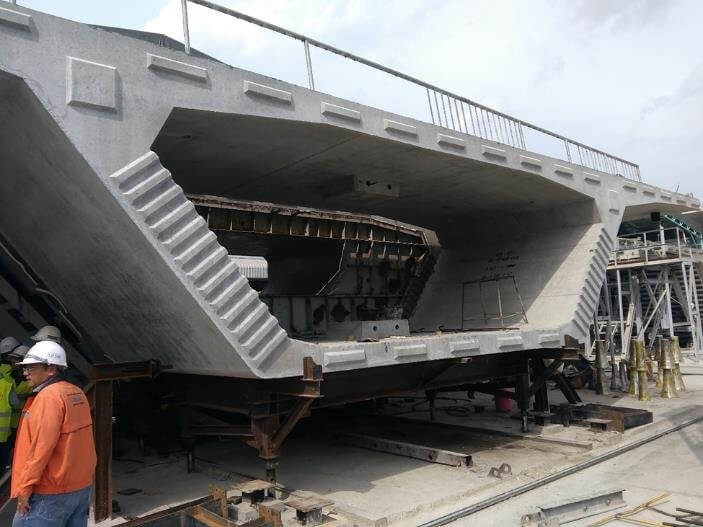Shear Key in Construction: Purpose, Functions, and Uses
In construction, A shear key is a feature or element that is incorporated into the design of certain structures to increase their stability and resistance to horizontal forces, especially those resulting from seismic activity or soil movements. Here are the functions and applications of shear keys:
The purpose of a shear key is to provide a mechanical connection or interlock between two adjacent structural elements, typically via a key-shaped groove and corresponding projection. This connection helps prevent relative movement or sliding between the components, enhancing the structure’s overall stability and burden transfer.
Functions:
Resistance to Lateral Forces: The primary function of shear keys is to resist lateral or shear forces. They provide additional stability against horizontal movements caused by earthquakes, wind loading, and soil displacements.
Load transfer:Shear keys facilitate the transmission of loads between adjacent structural elements, such as beams and columns or walls and foundations. By establishing a strong connection, they ensure that the applied forces are transmitted and distributed effectively between the connected elements.
Reducing Displacement: Shear keys can assist in limiting the displacement or movement of structural components during dynamic events, thereby minimizing potential structural damage, and preserving the structure’s integrity.
Shear keys are typically utilized in the following construction contexts:
Bridge construction:In bridge construction, shear keys are frequently incorporated at the abutments or foundations to increase the stability and resistance to lateral forces exerted by traffic loads or earthquakes. They aid in maintaining the bridge’s alignment and prevent the superstructure from shifting.
Retaining walls:Shear keys can be utilized in retaining wall systems to increase their resistance to earth pressures and ground movements. They offer a greater degree of resistance to sliding and flipping.
High-Rise Buildings: In seismic zones, shear keys can improve the resistance of tall buildings to lateral forces, thereby enhancing their overall structural performance and safety.
Earthquake resistant structures:Shear keys are integral to the design of earthquake-resistant structures such as moment-resisting frameworks and shear wall systems. They aid in the distribution of seismic forces and prevent major displacements or failures.
Overall, shear keys are used in construction to increase stability, resist lateral forces, transmit loads, and reduce displacement, especially in situations where horizontal movement or shearing pose a significant risk. Their implementation depends on the structure’s specific requirements and the anticipated forces it will encounter.
Disclaimer: This content is provided solely for your review. Erusu Consultants takes no liability for this article. The reader is advised to form their own opinion. Please consult a structural engineer before making any final decisions.






